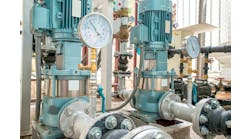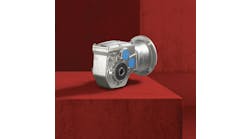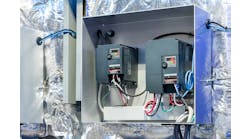Starting and stopping a motor can be done with three common methods: a motor starter, soft start or variable frequency drive (VFD). As of late, the use of a VFD is becoming more popular than ever due to its claimed efficiency benefits, but be sure it is needed. And, once specified, it must be properly installed to ensure reliable operation.
To start, take a step back and be sure you need a VFD for the application, as many users don't realize real benefits. Do you need to vary the speed of the motor or change the motor's acceleration? If neither, a motor starter is simple and will work great. Just want to soften the motor starts? Consider a soft starter. For all the above, a VFD may be the best choice.
The VFD, often called an ac drive or inverter, takes a single- or three-phase signal and varies the speed of a three-phase ac induction motor. This is its main benefit. Running a motor more slowly can save significant energy, and speed changes may be useful to the application. Another big benefit is adjustable acceleration and deceleration. Less acceleration can soften the mechanical forces at motor start and reduce inrush current. The VFD also has built-in overload protection and motor start/stop control functions.
There are both physical and electrical installation basics to be aware of when using a VFD. When mounting the VFD on a back panel, be sure to check the specifications. It is common for multiple devices to be installed in one location, but all VFDs need proper air flow, so check the installation instructions carefully when laying out a control panel. Mount the drives vertically. Some drives can be mounted with no clearance, but it's common to have a minimum side-to-side spacing of 50 mm or more and to have vertical clearance above and below the drive of 100 mm to 150 mm.
It's not uncommon to hear about noise problems in VFD applications. However, proper shielding and grounding and the use of filters or line reactors can help. If multiple VFDs are installed in a single location, don't daisy-chain the ground wire; it creates ground loops. Connect each ground to a single ground point, connected in parallel. The line reactor can help to protect from transient voltages and reduce harmonics to or from the drive. Keeping the load-side—output—wiring less than 75 ft between the drive and motor, or using a load-side reactor, can help to reduce the potential insulated-gate bipolar transistor (IGBT) reflective wave damage.
Electrically, proper run/stop control of the VFD is important. Many manufacturers do not recommend using contactors or disconnect switches on the line or load side of a VFD for run/stop control of the ac drive and motor, except for emergency situations. Opening a contactor at the line or load side of a VFD while the motor is running can cause failures in the inverter section of the drive or reduce its life. Even if it doesn't cause failure, it can take several seconds for a VFD to power on once power is applied.
A VFD is typically controlled via start/stop digital inputs and a speed-control signal, using a 0-10 Vdc, 4-20 mA or potentiometer analog input signal or a speed preset programmed into the drive. However, a proper risk assessment will likely show a safe-stop function is required as well. This functional safety capability, often called safe torque off (STO), as defined by EN IEC 61800-5-2, is an option on many VFDs that should be specified.
With any motor control circuit, proper overcurrent and ground-fault protection is required at the input of the device. A typical VFD accepts single-phase voltage, but it is not intended for use with single-phase motors. Although a standard three-phase induction motor works with a VFD, a three-phase inverter duty motor should be used. The inverter duty motor is more energy efficient when used with a VFD. It is also not susceptible to overheating at low motor speeds and has more low-speed torque compared to a standard induction motor.
There are two basic types of VFDs: the original scalar control type and the newer vector control type. The scalar control is open-loop using a voltage-frequency ratio and although it provides great speed regulation, ~0.5%, it does not have a fast response nor is it very precise. The vector control can be open- or closed-loop and uses current control of two vectors, torque and magnetizing flux for more responsive and precise control of the motor.
There are many more factors, features and functions to consider when using a VFD, so study the catalogs and manuals and then get with your vendors. With constant-torque or constant-speed applications, such as conveyors, compressors or mixers, there may be simpler options. However, whether replacing a dc motor or varying the speed and acceleration of your conveyor, fan, blower or pump, go with the VFD option. It's often the best choice, if installed properly.






